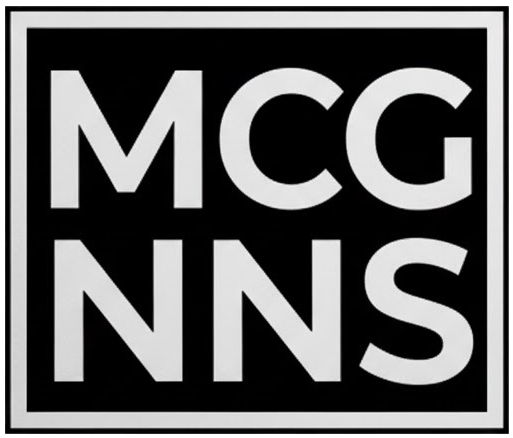10 Key Reasons Business Websites Fail to Convert Visitors


10 Reasons Your Business Website Is Failing to Convert Visitors Into Paying Customers and How to Improve Conversion Rates

Introduction
Every drop in conversion rate directly erodes revenue, and understanding why your business website is failing to convert visitors into paying customers is the first step toward reversing that trend. With an average conversion rate hovering around 2.9 percent and pages loading over five seconds seeing rates as low as 0.6 percent, the stakes have never been higher. This article maps out ten critical obstacles—from slow loading speeds and confusing navigation to weak calls-to-action and missing trust signals—and shows how each factor undermines your funnel. You will learn definitions, underlying mechanisms, and real-world examples of each issue, followed by practical remedies and insight into how McGinnis Made’s Beautiful & High Converting Websites service resolves these problems with design, performance optimization, and strategic UX. By the end, you’ll have a clear roadmap to diagnose conversion blockers and implement solutions that drive measurable growth.
Why Is Slow Website Speed Killing Your Conversion Rate?
Slow loading speed describes the delay between a visitor’s request and when page content fully appears. That delay frustrates users, raises bounce rates, and triggers search engines to downgrade relevance—a combination that cuts conversion by up to 4.4 percent for each additional second. Faster load times improve perceived site quality and jump-start visitor engagement, directly boosting conversion potential.
Beyond immediate visitor frustration, slow performance undermines Core Web Vitals and mobile indexing, harming organic visibility and compounding losses over time. In 2025, pages loading in under 2.5 seconds average a 1.9 percent conversion rate versus 0.6 percent for sites exceeding five seconds. Addressing performance issues not only rescues impatient prospects but reinforces your site’s technical authority with search engines.
How Does Slow Loading Speed Impact Visitor Behavior and Bounce Rates?
When pages load slowly, visitors:
- Abandon after three seconds on mobile, foregoing purchase intent.
- Experience increased frustration with each unrendered element, reducing engagement.
- Signal disinterest to search engines, which then lower ranking positions.
These behaviors create a vicious cycle of low engagement and diminished visibility, driving even fewer prospects into your conversion funnel.
What Are the Key Signs of Slow Website Performance on Your Site?
You can identify performance bottlenecks by measuring: websites
- Time to First Byte (TTFB) exceeding 600 ms.
- Largest Contentful Paint (LCP) over 2.5 seconds.
- Cumulative Layout Shift (CLS) above 0.1.
- High bounce rates on landing pages (over 70 percent).
Monitoring these metrics alerts you to urgent speed issues that directly erode conversion potential.
How Can McGinnis Made Optimize Your Website Speed for Better Conversions?

McGinnis Made applies a multi-layered performance strategy:
- Image optimization and responsive formats to reduce file sizes.
- CDN implementation and caching rules to shorten server response time.
- Minification of scripts and deferment of non-critical assets for faster rendering.
By blending aesthetic design with technical tuning, McGinnis Made’s Beautiful & High Converting Websites service creates sites that both look stunning and load in under three seconds, safeguarding conversion rates and search visibility.
What Quick Steps Can You Take to Improve Website Loading Times?
- Compress and serve images in next-gen formats.
- Enable browser caching and leverage a content delivery network.
- Minimize render-blocking JavaScript and CSS.
- Prioritize above-the-fold content loading.
These immediate actions can cut initial load time by 30–50 percent, reclaiming visitor attention and reducing bounce.
How Does Poor User Experience and Confusing Navigation Reduce Conversions?
Poor user experience (UX) surfaces when information is hard to find, interactions feel unintuitive, and visual hierarchy is muddled. Visitors form impressions in just 0.05 seconds, and 61 percent will leave if they can’t locate desired content within five seconds. A confusing site structure fractures the customer journey, causing prospects to drop off before reaching any calls-to-action.
Improving usability strengthens trust, guides intent, and encourages progression through key pages. When navigation aligns with mental models—grouping related services, highlighting primary actions, and offering clear paths—conversion rates climb as users smoothly flow toward purchase decisions.
What User Experience Factors Most Affect Visitor Engagement?
The core UX elements impacting engagement include:
- Visual hierarchy that distinguishes primary actions.
- Readable typography and contrast to enhance comprehension.
- Consistent layout patterns to reduce cognitive load.
- Interactive feedback (hover states, progress indicators).
These factors collectively shape the ease and satisfaction of each visit, directly influencing conversion likelihood.
How Can Confusing Site Structure Drive Visitors Away?
When navigation labels lack clarity or menus are nested too deeply, users:
- Fail to locate product or service pages quickly.
- Encounter dead ends that erode confidence.
- Abandon tasks when unsure how to proceed.
This friction builds frustration and sends prospects to competitors with more intuitive designs.
How Does McGinnis Made Enhance UX and Simplify Navigation?

McGinnis Made’s approach to UX includes:
- Information architecture audits that align menu items with user intent.
- Wireframe prototypes that prioritize top converting pathways.
- Consistent design systems ensuring uniform interaction patterns.
By mapping logical site hierarchies and crafting clear signposts, McGinnis Made turns complex catalogs into straightforward journeys that guide visitors from discovery to conversion.
What Are Simple Ways to Improve Website Usability Today?
- Consolidate menu options to five or fewer primary categories.
- Use descriptive labels that match visitor language and search queries.
- Implement breadcrumb trails to reinforce location context.
- Add a persistent search bar for direct access to content.
These practical changes reduce confusion and help users complete desired actions seamlessly.
UX Factor
Impact on Engagement
Improvement Example
Visual Hierarchy
Guides eye to CTAs
Use larger, high-contrast buttons
Consistent Layout
Reduces cognitive load
Apply uniform spacing and typography styles
Clear Navigation Labels
Increases findability
Replace ambiguous labels with action words
Interactive Feedback
Confirms user actions
Provide hover and click animations
Why Are Weak or Unclear Calls-to-Action (CTAs) Hurting Your Website Conversions?
A call-to-action is a directive that prompts visitors to take the next step, such as contacting sales or requesting a demo. When CTAs lack contrast, concise messaging, or fail to appear in context, prospects hesitate and bounce. Effective CTAs use commanding verbs, highlight benefits, and occupy prominent positions, making the desired action unmistakable and enticing.
Clarity in CTAs bridges the gap between interest and commitment, transforming passive browsers into active leads. Each ambiguity removed from placement, copy, and design yields measurable upticks in clicks and form submissions.
What Makes an Effective Call to Action for Website Visitors?
An effective CTA combines:
- Action-oriented language (e.g., “Start Your Free Audit”).
- Benefit emphasis (e.g., “Boost Conversions by 30 percent”).
- Visual prominence (contrasting color and ample whitespace).
These attributes guide attention and raise click-through rates by over 200 percent when optimized properly.
How Can Poor CTA Placement and Messaging Confuse Visitors?
Common CTA mistakes include:
- Burying buttons below the fold on critical pages.
- Using vague labels like “Submit” without context.
- Overloading pages with competing CTAs.
Such errors disperse focus and leave visitors uncertain about their next move.
How Does McGinnis Made Design Clear and Compelling CTAs?
McGinnis Made’s design process for CTAs involves:
- A/B testing placement and copy to identify highest-performing variations.
- Applying contrast guidelines to ensure buttons stand out.
- Crafting concise, benefit-driven text that aligns with each page’s goal.
By systematically refining CTA elements, McGinnis Made elevates click rates and accelerates prospects through the funnel.
What Immediate Changes Can Boost Your CTA Performance?
- Replace generic labels with benefit-focused verbs.
- Increase button size and surround with whitespace.
- Position primary CTAs above the fold on every key page.
- Limit each page to one primary action to avoid choice overload.
These swift adjustments sharpen visitor focus and significantly improve conversion.
CTA Attribute
Best Practice
Conversion Impact
Label Clarity
Use “Get Your Quote” vs “Submit”
+42 percent click-through rate
Visual Contrast
High-contrast button colors
+30 percent visibility
Placement
Above the fold on landing pages
+25 percent early engagement
Single Focus
One primary CTA per page
+18 percent reduced bounce
How Does Non-Responsive Design and Poor Mobile Experience Affect Conversions?
Non-responsive design occurs when a site fails to adapt layout and functionality across devices. With mobile accounting for 54.8 percent of global traffic, a poor mobile experience drives away 61 percent of users who won’t return and pushes 40 percent to competitors. Responsive layouts, touch-friendly controls, and optimized media queries ensure consistent usability and preserve conversion opportunities on every screen.
A mobile-first approach also aligns with search engine indexing priorities, preventing ranking penalties and securing organic visibility for on-the-go prospects. Delivering seamless experiences across devices supports brand credibility and encourages conversions regardless of the platform.
Why Is Mobile Responsiveness Essential for Modern Website Success?
Mobile responsiveness ensures:
- Readable content without zooming.
- Tap-ready buttons sized for fingertips.
- Flexible layouts that preserve hierarchy on small screens.
Meeting these expectations retains mobile visitors and reinforces search rankings under Google’s mobile-first indexing policy.
What Are the Consequences of a Poor Mobile User Experience?
When mobile usability is lacking:
- Visitors abandon sites that pinch-and-zoom.
- Conversion funnels break when forms overflow screens.
- SEO rankings suffer due to failing Core Web Vitals.
These issues drive mobile traffic away before any value can be delivered.
How Can McGinnis Made Create Mobile-Friendly Websites That Convert?
McGinnis Made’s responsive design solutions include:
- Fluid grids and flexible images that adapt to any viewport.
- Optimized touch targets and streamlined navigation for mobile tasks.
- Progressive enhancement to ensure critical content loads first.
By crafting mobile-prioritized layouts, McGinnis Made ensures prospects enjoy frictionless experiences and remain engaged through to conversion.
What Are Quick Fixes to Improve Mobile Usability?
- Implement a viewport meta tag for correct scaling.
- Increase button size to at least 44 × 44 pixels.
- Simplify mobile menus with collapsible sections.
- Defer non-essential scripts to speed initial render.
These rapid changes stabilize mobile performance and foster smoother user journeys.
How Does Lack of Trust Signals and Credibility Lower Visitor Confidence?
Trust signals—such as customer reviews, security badges, and clear contact information—reassure visitors that a brand is legitimate and reliable. Without them, prospects hesitate to share personal data or complete purchases. Displaying verifiable social proof and professional credentials reduces perceived risk, yielding a 120 percent higher conversion rate among visitors who see positive reviews.
In an environment of increasing cyber-awareness, visible security indicators and transparent business details form the foundation of online credibility. Embedding these elements throughout your site cultivates confidence and accelerates commitment.
What Trust Elements Do Visitors Look for Before Converting?
Visitors scan for:
- Third-party review aggregates and star ratings.
- SSL certificates and secure checkout badges.
- Clear company address and responsive contact options.
- Client logos or case study highlights.
These cues signal reliability and encourage prospects to proceed.
How Can Missing Trust Signals Increase Bounce Rates?
When trust elements are absent or hidden:
- Users question site legitimacy and leave.
- Conversion funnels stall at data entry stages.
- Return visits decline as perceived risk remains high.
Filling these gaps is essential to preventing drop-off.
How Does McGinnis Made Build Credibility Through Website Design?
McGinnis Made integrates trust-building features by:
- Displaying client testimonials marked up as reviews.
- Embedding secure payment badges on transaction pages.
- Showcasing service awards and local support credentials.
This strategic placement of trust signals reassures prospects and converts uncertainty into action.
What Simple Trust Signals Can You Add Now?
- Add an SSL lock icon and note “Secure Checkout.”
- Feature two to three verified testimonials on home and service pages.
- Include a clear footer with company name and service areas.
- Display client logos with a brief “Trusted by” statement.
These tactics strengthen visitor confidence and reduce bounce.
Why Is Irrelevant, Outdated, or Weak Content Failing to Engage Visitors?
Content relevance hinges on addressing visitor intent with timely, valuable information. Outdated statistics, generic messaging, or thin copy fail to resonate and damage both engagement and SEO. Fresh, targeted content that aligns with user queries and industry trends sustains interest, demonstrates authority, and supports search visibility—critical factors in converting visitors into customers.
Strong content also powers internal linking, drives dwell time, and underpins clear value propositions. Crafting persuasive narratives with up-to-date data positions your brand as a thought leader and nurtures prospects toward conversion.
How Does Poor Content Affect Visitor Interest and SEO?
Weak content leads to:
- High exit rates due to lack of relevance.
- Decreased crawl frequency as search engines detect staleness.
- Lower rankings for targeted keywords and reduced organic traffic.
Investing in quality content sustains both user engagement and discoverability.
What Are the Signs of Outdated or Unengaging Website Content?
Indicators include:
- References to obsolete technologies or years.
- Thin pages under 300 words lacking depth.
- Sparse use of visuals or interactive elements.
- Declining page views and time on page metrics.
Spotting these signals is the first step toward a content refresh.
How Can McGinnis Made Develop Relevant and Persuasive Content?
McGinnis Made’s content strategy service offers:
- Audience research to tailor messaging to startups, higher education, and agencies.
- SEO-driven topic mapping that aligns with high-intent search queries.
- Ongoing content maintenance to update statistics and insights.
By blending brand voice with data-backed narratives, McGinnis Made crafts pages that educate, engage, and convert.
What Are Quick Content Updates to Improve Engagement?
- Refresh statistics with current year data.
- Break text into scannable headings and bullet lists.
- Add relevant images with descriptive alt text.
- Link internally to related services or articles.
These simple revisions boost readability and demonstrate active site stewardship.
How Do Outdated or Cluttered Website Designs Discourage Conversions?
A cluttered or old-fashioned design signals neglect, undermining trust and distracting visitors from calls-to-action. Modern, minimalist layouts emphasize essential content and guide the eye to conversion triggers. By removing visual noise and updating styles, you project professionalism and focus prospects on key messages, elevating perceived value and prompting action.
Clean design also improves load times and accessibility, reinforcing both UX and conversion outcomes. Investing in a contemporary aesthetic transforms first impressions into sustained engagement.
Why Is Modern, Clean Design Crucial for First Impressions?
First impressions form in fractions of a second, and a sleek design conveys competence, legitimacy, and care. Modern design principles—ample whitespace, consistent color palettes, and intuitive iconography—instill confidence and set the stage for a seamless journey toward conversion.
How Can Cluttered Layouts Confuse and Frustrate Visitors?
Excessive elements and inconsistent spacing can:
- Obscure primary CTAs and value statements.
- Overwhelm users with competing focal points.
- Increase cognitive load, prompting premature exits.
Clarity in layout anchors visitor attention and keeps them on task.
How Does McGinnis Made Deliver Beautiful, High-Converting Website Designs?
McGinnis Made’s design process includes:
- Strategic wireframes that prioritize conversion pathways.
- Custom style guides enforcing visual harmony.
- Iterative testing of element placement and hierarchy.
Through this disciplined approach, McGinnis Made delivers websites that marry visual appeal with conversion science.
What Design Tweaks Can You Make to Simplify Your Website?
- Increase whitespace around key elements.
- Limit font families to two complementary styles.
- Use consistent button shapes and colors.
- Remove unnecessary graphics that distract from CTAs.
These refinements restore visual focus and reinforce conversion goals.
How Do Complicated Forms and Checkout Processes Cause Visitor Drop-Off?
Complex forms and multi-step checkout flows introduce friction that interrupts buyer momentum. Each additional field or unclear instruction heightens abandonment risk: nearly 70 percent of form starts end without submission. Simplifying fields to essential data, guiding users with progress indicators, and offering guest checkout options eliminate friction and recover lost conversions.
Streamlined forms not only reduce abandonment but also improve data quality, providing clearer insights into customer intent. Optimizing form design is a direct lever for lifting completion and revenue.
What Makes Forms and Checkout Pages User-Friendly?
User-friendly forms feature:
- Minimal required fields, asking only essential information.
- Inline validation and error messages to prevent frustration.
- Clear labels and grouping of related inputs.
- Progress indicators for multi-step processes.
These design elements reduce abandonment and encourage completion.
How Can Complex Processes Increase Form Abandonment Rates?
When forms include unnecessary fields or lack real-time feedback, visitors:
- Grow impatient and abandon mid-form.
- Make errors without clear guidance on correction.
- Lose trust when payment steps are convoluted.
Addressing these pain points is critical to recovering potential leads.
How Does McGinnis Made Streamline Forms and Checkout for Better Conversions?
McGinnis Made’s form optimization includes:
- Auditing field necessity and removing redundant inputs.
- Implementing contextual help text and validation patterns.
- Integrating secure, one-click payment solutions where applicable.
By crafting frictionless flows, McGinnis Made boosts form completion rates and captures more leads.
What Are Easy Ways to Simplify Your Contact and Checkout Forms?
- Combine first and last name into one full-name field.
- Remove non-critical marketing opt-in boxes.
- Add descriptive placeholders and real-time field validation.
- Offer guest checkout to reduce signup friction.
These adjustments reduce cognitive load and accelerate form submissions.
Why Is a Lack of Clear Value Proposition Confusing Your Visitors?
A value proposition succinctly explains why a visitor should choose your solution over alternatives. Without a clear, differentiated statement, prospects cannot discern unique benefits and often abandon in search of clearer offers. A strong value proposition pairs a concise promise with proof points, guiding visitors toward conversion by outlining exact benefits and setting expectations from the outset.
Articulating your unique selling points—whether it’s faster results, local support, or industry expertise—anchors visitor understanding and primes them for your calls-to-action.
How Does a Strong Value Proposition Influence Buying Decisions?
A compelling value proposition:
- Clarifies what problem you solve and for whom.
- Highlights differentiators that set you apart.
- Reduces perceived risk by aligning benefits with customer needs.
This clarity shortens decision cycles and drives higher conversion rates.
What Happens When Visitors Don’t Understand Your Unique Offer?
When value is unclear:
- Visitors cannot justify engagement or purchase.
- Bounce rates increase on entry pages.
- Prospects gravitate toward competitors with sharper messaging.
Defining value is essential to capturing attention and interest.
How Can McGinnis Made Help Define and Highlight Your Value Proposition?
McGinnis Made collaborates with clients to:
- Conduct competitive analysis to discover white-space differentiators.
- Craft concise headlines and supporting bullet points that emphasize unique benefits.
- A/B test messaging variations to identify highest-performing value statements.
This structured approach ensures your value proposition resonates and drives action.
What Are Quick Tips to Clarify Your Website’s Value Statement?
- Write a one-sentence headline that states your primary benefit.
- Follow with three bullet points detailing proof or features.
- Place the value proposition prominently above the fold.
- Use customer language drawn from reviews or feedback.
These steps deliver immediate clarity and guide visitors toward conversion.
Proposition Element
Purpose
Example
Headline
State core benefit in one sentence
“Launch Faster Websites That Convert”
Supporting Bullets
Provide proof and sub-benefits
“24/7 local support,” “SEO-ready design”
Placement
Ensure immediate visibility
Above the main hero image
How Does Ignoring Website Analytics and User Feedback Limit Conversion Growth?
Tracking user behavior through analytics provides real-time insight into which pages perform well and where drop-off occurs. Ignoring these signals prevents you from spotting hidden barriers—whether it’s a poorly converting call-to-action or a broken form. Coupling analytics with direct user feedback reveals qualitative issues that numbers alone miss, enabling targeted optimizations that continuously lift conversion rates.
Data-driven iteration transforms guesswork into precise adjustments, fostering a culture of ongoing improvement and sustainable growth.
Why Is Tracking User Behavior Essential for Conversion Rate Optimization?
Analytics tools capture metrics such as:
- Conversion funnels and drop-off points.
- Session duration and page engagement.
- Traffic source performance and lead quality.
Interpreting these data points equips you to refine pages and remove friction.
How Can User Feedback Reveal Hidden Conversion Barriers?
Soliciting feedback through surveys or chat can uncover:
- Confusing navigation labels.
- Unmet expectations about product features.
- Frustrations with page performance or form clarity.
Integrating these insights guides more empathetic, user-centric improvements.
How Does McGinnis Made Use Analytics to Continuously Improve Websites?
McGinnis Made’s ongoing optimization service includes:
- Setting up goal tracking and event monitoring in analytics platforms.
- Conducting heat-map and session recordings to visualize behavior.
- Iterating design and copy based on quantitative and qualitative data.
This systematic approach ensures each site evolves in alignment with user needs and conversion goals.
What Simple Analytics Tools and Feedback Methods Can You Use Now?
- Install Google Analytics 4 for funnel and engagement metrics.
- Use Hotjar or similar heat-mapping tools to identify click patterns.
- Deploy on-site surveys asking visitors about obstacles they encountered.
- Implement live chat widgets to capture real-time feedback.
These methods deliver actionable data that powers incremental conversion improvements.
By addressing these ten core issues and applying both immediate fixes and strategic enhancements—supported by McGinnis Made’s Beautiful & High Converting Websites service—you can transform a stalled website into a high-performance conversion engine. Contact McGinnis Made today for a consultation and start converting more visitors into paying customers.

Ready to Stop Losing to Your Competition?








